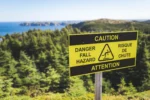Hiking Safely in Taiwan: 11 Tips You Need to Know
This post may contain affiliate links. This means that we may receive a small commission from purchases through those links. Read more in our affiliate disclosure.
As John Muir once said, ‘The mountains are calling, and I must go.’ But before you answer that call in Taiwan, let’s equip you with the knowledge to venture safely into its captivating but challenging trails.
To stay safe while hiking in Taiwan, watch out for venomous snakes and wild boars. Take care to stay well hydrated during the hot and humid summers, and be prepared for heavy rains during typhoon season. Keep an eye on the sunset times, which might be much earlier than you’re used to (6 pm +/- 1.5 h throughout the year). Trails, especially higher up in the mountains, can include some difficult terrain like steep climbing sections, so schedule plenty of time.
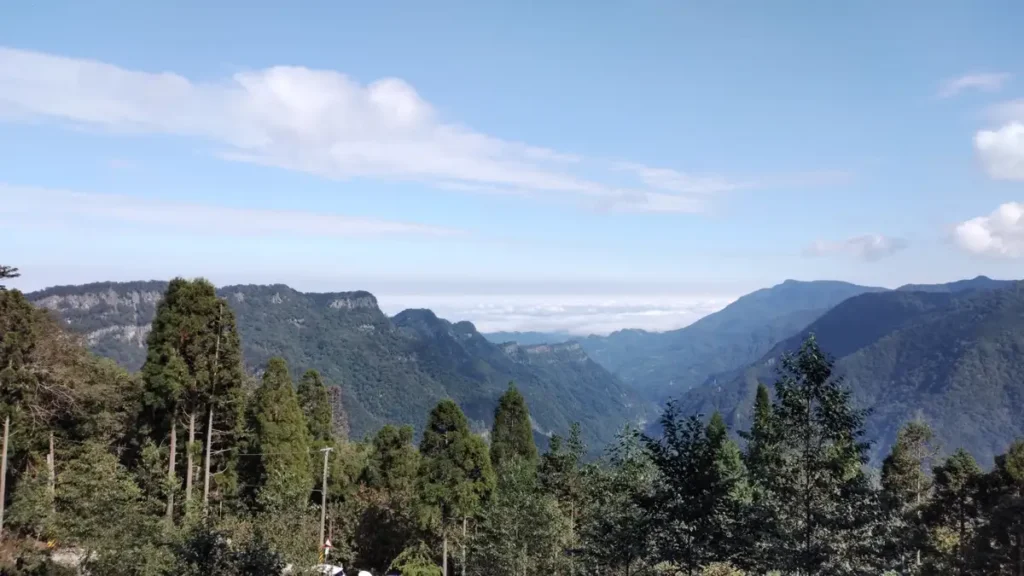
I learned some of these lessons the hard way on my extensive hikes throughout Taiwan – and now you can learn them the easy way by reading on!
- Introduction
- 1. Dangerous Animals in Taiwan
- Formosan Black Bear (Ursus thibetanus formosanus)
- Bamboo Pit Viper (Trimeresurus stejnegeri)
- Taiwan Habu (Protobothrops mucrosquamatus)
- Chinese Cobra (Naja atra)
- Wild Boars (Sus scrofa)
- Wasps and Bees
- Formosan Rock Macaque (Macaca cyclopis)
- 2. Climate and Weather Patterns in Taiwan
- 3. Sunset Timing in Taiwan
- 4. Terrain and Trail Marking Systems in Taiwan
- Ribbon Trail Markers
- Diverse Terrain: From Coastal Walks to Mountain Trails
- Special Precautions for High-Altitude Hiking
- 5. Dangerous Plants in Taiwan
- Saw Grass
- Giant Hogweed (Heracleum mantegazzianum)
- Poison Ivy (Toxicodendron orientale)
- Chinese Lacquer Tree (Toxicodendron vernicifluum)
- Taiwanese Nettle (Urtica thunbergiana)
- 6. Health Risks for Hikers in Taiwan
- 7. Legal Hiking and Camping Regulations in Taiwan
- 8. Cultural Considerations when Hiking in Taiwan
- 9. Availability of Hiking Resources in Taiwan
- 10. Emergency Services Available to Hikers in Taiwan
- Emergency Phone Numbers
- Accessibility and Response Time
- Connectivity for Emergency Calls
- Preparing for Emergencies
- 11. Insurance and Healthcare Access in Taiwan
- Conclusion
1. Dangerous Animals in Taiwan
Taiwan is home to an intriguing array of wildlife, some of which are dangerous to hikers:
Formosan Black Bear (Ursus thibetanus formosanus)
This bear is the largest mammal in Taiwan. It’s recognizable by the distinctive white “V” on its chest and its primarily black fur. The Formosan black bear is an endangered species, and almost only lives in remote areas above 1000 m of altitude. As such, it is extremely rare to encounter one – I never once was able to spot a bear on all my hikes throughout Taiwan.
Although they are rare, mostly nocturnal and omnivorous, these bears can be dangerous, especially when surprised or when with cubs. For safety, make noise while hiking to alert bears of your presence, secure food properly, and if you encounter one, slowly back away without turning your back to the bear – you can check out our bear safety guide if you’re worried.
Bamboo Pit Viper (Trimeresurus stejnegeri)
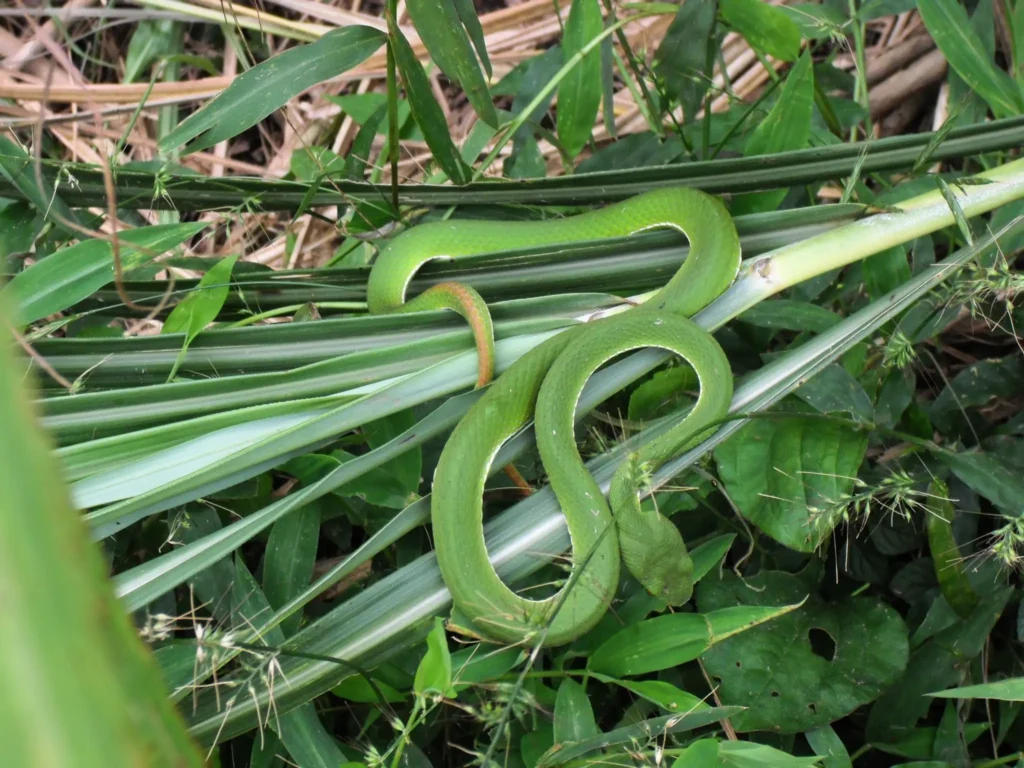
A venomous snake, easily identified by its bright green color, the triangular shape of its head, and its red tail. (The red tail distinguishes it from its non-venomous cousin, the reater green snake (Entechinus major), which has a fully green tail, as well as a smaller head.) Pit vipers are often found in trees or bushes, which makes them harder to spot. To stay safe, be vigilant in areas with dense foliage, avoid reaching into areas you can’t see clearly, and if you encounter one, give it a wide berth.
Taiwan Habu (Protobothrops mucrosquamatus)

This pit viper is brown or grayish and blends well with its environment. It’s typically found in grassy or rocky areas. Distinguishable by the pattern of irregular crossbands on its body, it can be aggressive if threatened. To prevent bites, wear sturdy boots and long pants, and stay on clear paths. Be especially careful where you step when river-tracing, as they might be laying on rocks in the sun, or hiding between them.
Chinese Cobra (Naja atra)

The Chinese Cobra is recognizable by its hood and typically black or dark gray color. These cobras are usually found in lowland areas and near water. They can be mistaken for other non-venomous snakes, but the cobra’s hood is a key differentiator. If you encounter one, remain calm, do not make sudden movements, and slowly back away.
Wild Boars (Sus scrofa)
Boars are common in Taiwan’s forests. These animals can be aggressive, especially when with piglets. They are recognizable by their stocky build, coarse hair, and relatively long snouts. Usually, boars will run away as soon as they notice you, so you can avoid an encounter by making noise while hiking. If you see one, keep your distance, avoid feeding them, and if they charge, climb a tree if possible.
Wasps and Bees
Taiwan has several species, including some that are aggressive. To avoid attracting them, wear unscented lotions, avoid brightly colored clothing, and be cautious around their nests. If you are allergic, carry an epinephrine auto-injector.
Formosan Rock Macaque (Macaca cyclopis)
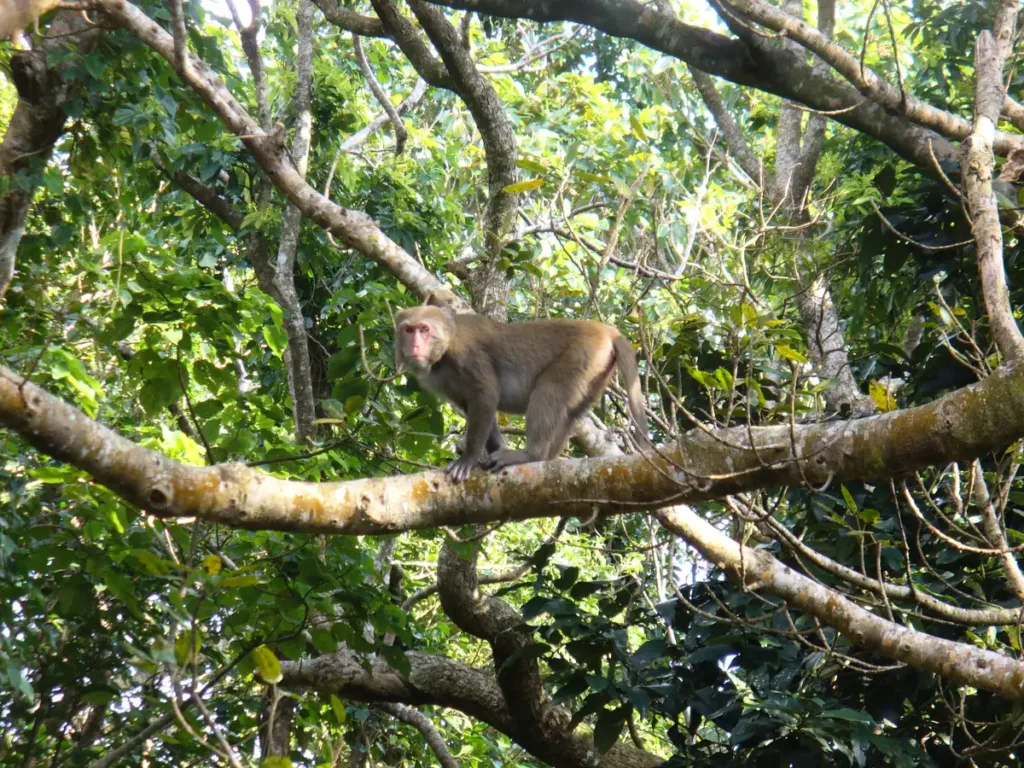
The Formosan Rock Macaques are common, especially in mountain forests and in the south of the island. They have brown or grey fur and a shorter tail compared to other monkeys. Typically, the Taiwanese Macaques have little interest in humans and stay high up in their trees; however they can become aggressive if they associate humans with food. To stay safe, do not feed them, avoid eye contact, and secure all your belongings.
2. Climate and Weather Patterns in Taiwan
Taiwan experiences a tropical marine climate, with often incredibly hot and humid summers, which brings specific challenges and risks. Here’s what you need to know:
- Subtropical North and Tropical South: Taiwan’s northern region experiences cool, wet winters and hot, humid summers, while the south enjoys a warmer, more tropical climate year-round.
- Typhoon Season (June to October): This period brings heavy rainfall and strong winds. Typhoons can cause landslides and flooding, making hiking dangerous. During typhoon season, monitor weather updates, and don’t go hiking during typhoons, as trails can become impassable, and the risk of falling debris increases. Typhoon winds are much stronger on the east coast as well as the north and south compared to the west, which is protected from the storm by the high mountains in the center of the island. The west cost normally only experiences heavy rains.
- Rainfall Patterns: The east coast receives more rainfall than the west. Mountainous areas also experience more precipitation, which can lead to sudden changes in weather conditions.
- Heat and Humidity: High temperatures and humidity, especially in summer, increase the risk of heat exhaustion and heatstroke. Drink plenty of water, wear light, breathable clothing, and avoid hiking during the hottest part of the day.
- The sun is strong: The UV radiation can be deceptively strong, even in winter when it feels cold (and yet, the sun in high in the sky). Use sunscreen and other sun protection, especially when at high altitudes.
- Heavy Rainfall and Flooding: Sudden heavy rains can cause flash floods and landslides. Always check the weather forecast before hiking, avoid river trails during and after heavy rain, and be prepared to turn back if conditions worsen.
3. Sunset Timing in Taiwan
The time of nightfall in Taiwan might surprise visiting hikers from higher latitudes (such as this Dutch couple) – so don’t get caught in the dark!
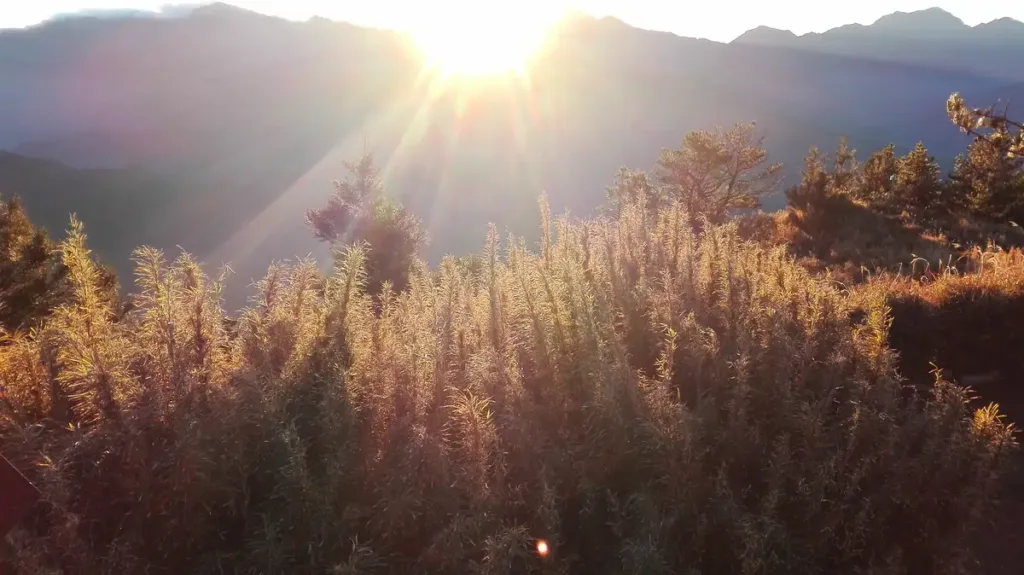
In Taiwan, the sunset is fairly close to 6 pm throughout the year; the summer months (May to August) offer longer slightly daylight hours, until around 6:30 PM to 7:00 PM, while in winter, (November to February) the sun sets as early as 5:00 PM to 5:30 PM.
Also, keep in mind that the trajectory of the sun over the sky is almost vertical: If the sun stands 15 degrees above the horizon (if you extend your arm and hold your fingers horizontally above the horizon, 15 degrees corresponds to four fingers width), you have about an hour until dusk; unlike higher latitudes where you still have more time.
So, either carefully plan your hike to ensure you complete them well before dusk (take into account that hikes might take longer due to the difficult terrain), or bring a head lamp (which I highly recommend in any case).
4. Terrain and Trail Marking Systems in Taiwan
When you set foot on a trail in Taiwan, you’re stepping into a world that blends natural beauty with a strange trail marking system.
Ribbon Trail Markers
In Taiwan, one of the most common methods of marking trails is through the use of plastic ribbons. These ribbons, typically bright in color, are tied around trees and other natural features. They serve as a breadcrumb trail, guiding hikers along the path. The color and pattern of the ribbons can vary, but they are usually conspicuous enough to be noticed easily. Ribbon colors are inconsistent along a given trail, often there’s a wild mix.
However, the presence of ribbons doesn’t always mean that there’s a functional trail – the vegetation, especially bamboo, grows so quickly that un-used trails are quickly overgrown and disappear completely, leaving only some stray ribbons behind.
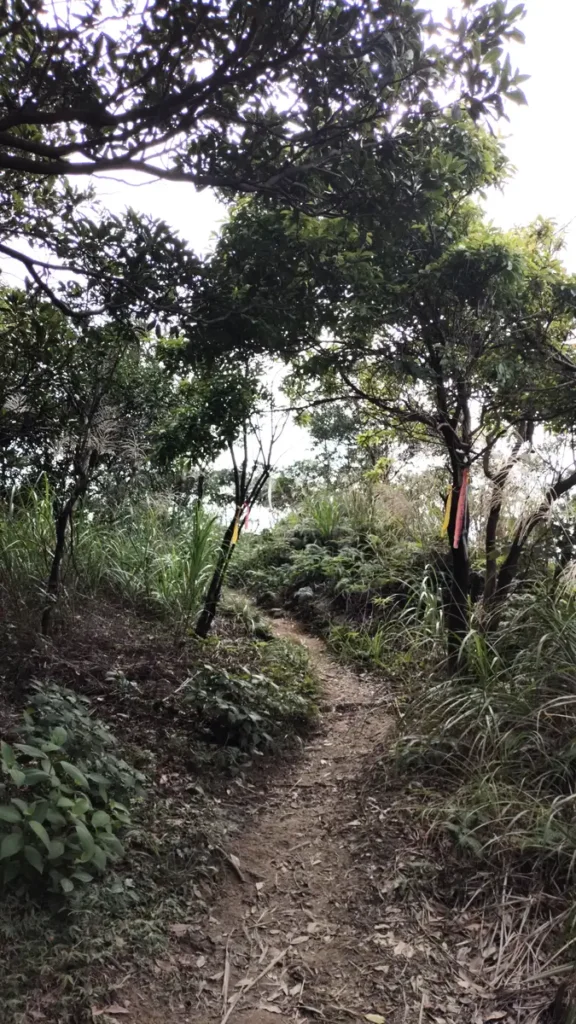
I am personally not a fan of this system at all. The ribbons slowly degrade, falling apart into micro-plastics flying into the wind the moment someone touches them. On obvious trails with plenty of markings, I like to take the oldest ones off and stuff them into my trash pocket, before they turn into plastic pollution in an otherwise untouched forest.
Diverse Terrain: From Coastal Walks to Mountain Trails
Taiwan’s landscape is incredibly varied, offering everything from gentle coastal walks to challenging mountain trails. The terrain can change rapidly, so it’s best to be prepared for everything from muddy paths to rocky ascents.
- Coastal Trails: Usually flatter but can be slippery, especially after rain. Watch out for tides if the trail runs close to the shore.
- Forest Trails: Often covered in roots and undergrowth, requiring careful footing to avoid tripping. Often, you have climbing sections including ropes and large rocks to be scaled.
- Mountain Trails: Can include steep, rocky sections. In some areas, you might encounter ropes or ladders to assist with difficult sections, or just plain giant rocks to be climbed.
When it rains, a lot of trails become rather slippery, especially where moss grows or it gets muddy. Don’t step on moss that grows on rocks. As for the mud, I’ve learned to balance myself out when I slip – it takes practice. There’s really no sole profile deep enough to give you traction in that. Hiking sticks could help, though.
In the mountains, when you might be lost, climb up to the ridge, not down to the streams. Ridges usually have trails, while streams expose you to potential flash floods, are very difficult and tiring to climb along, and you might end up much further away from any trails than you started. If you can’t find your way back, it’s much better to stay put on a trail than to venture off into the jungle.
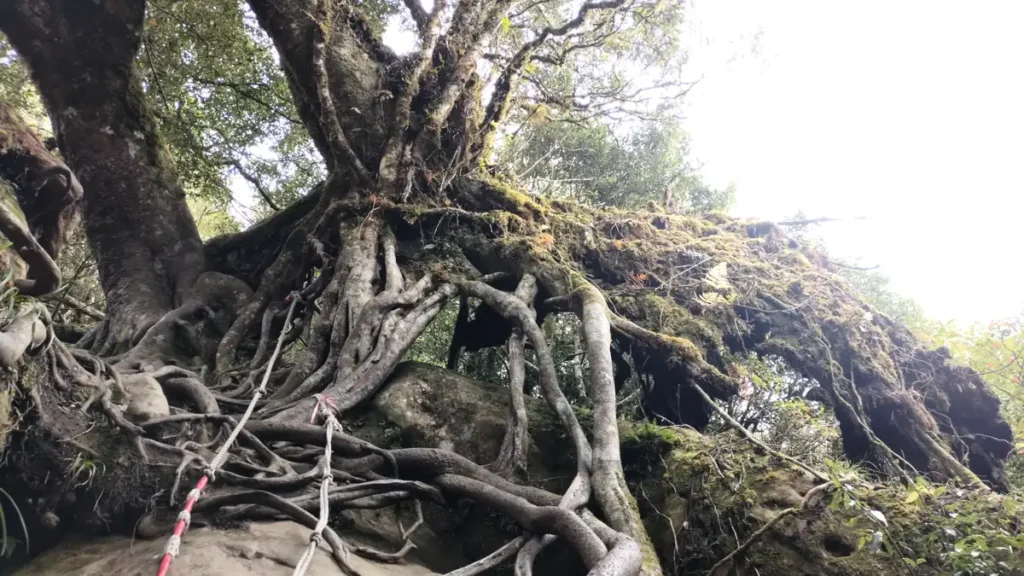
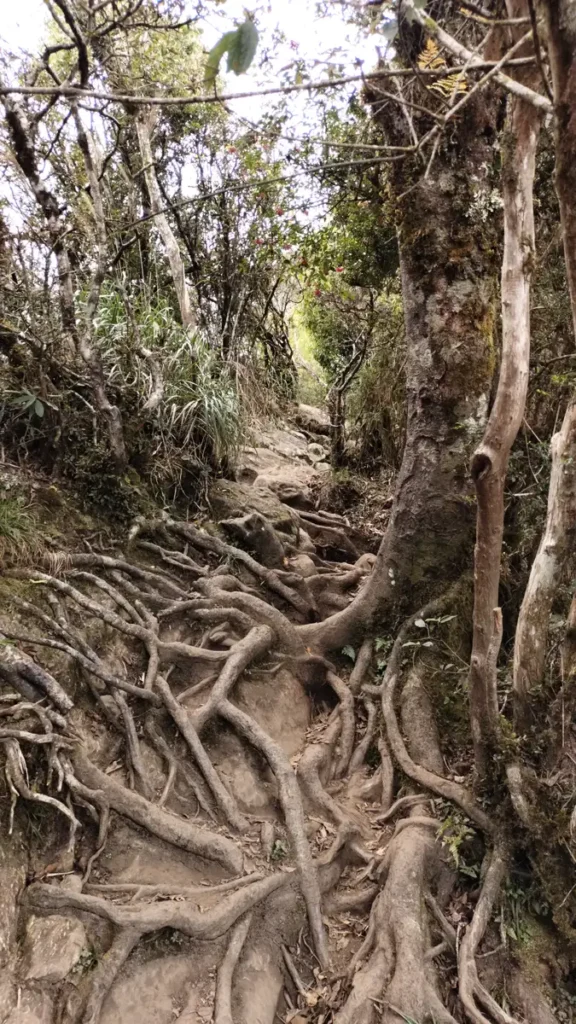
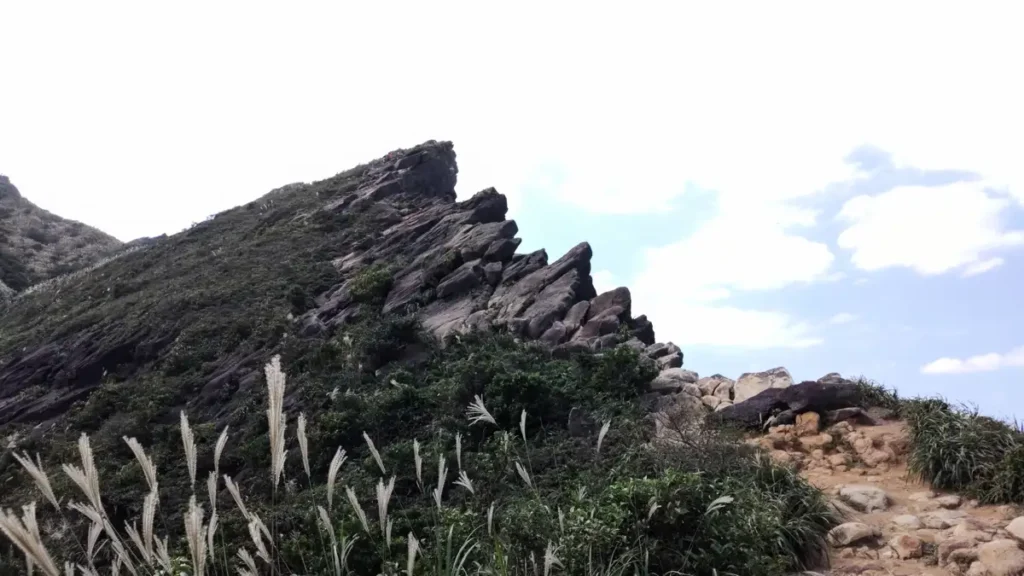
Special Precautions for High-Altitude Hiking
For the adventurers drawn to Taiwan’s high-altitude regions, like the majestic Yushan or Hehuanshan, there are a few extra considerations:
- Acclimatization: Take time to acclimatize to the altitude, especially if you’re planning to ascend above 2,500 meters. Symptoms of altitude sickness include headaches, nausea, and dizziness.
- Lodging for Acclimatization: There are specific lodges, such as the Paiyun Lodge on Yushan, where hikers can stay to adjust to the thin air. Booking in advance is recommended as these lodges fill up quickly.
- Weather Changes: High-altitude areas can experience rapid weather changes. Be prepared with appropriate gear and check weather forecasts.
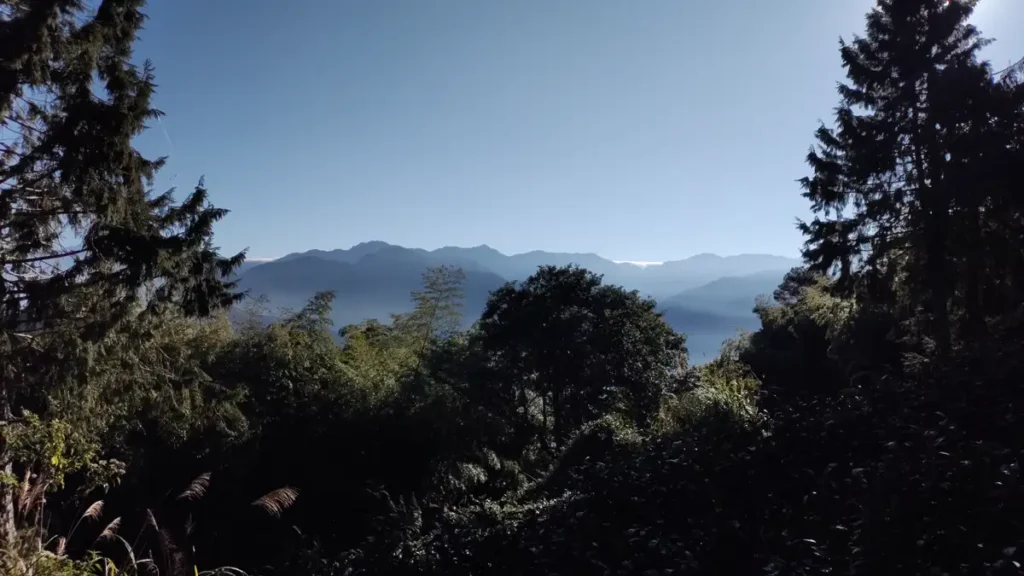
5. Dangerous Plants in Taiwan
Taiwan’s lush landscapes are home to a diverse range of flora. While most plants add to the scenic beauty and ecological diversity, there are quite a few that can cause scratches and rashes. In general, when scrabling up a hill, watch out for what you hold on to – there might be thorns on it (especially if it’s a vine).
Saw Grass
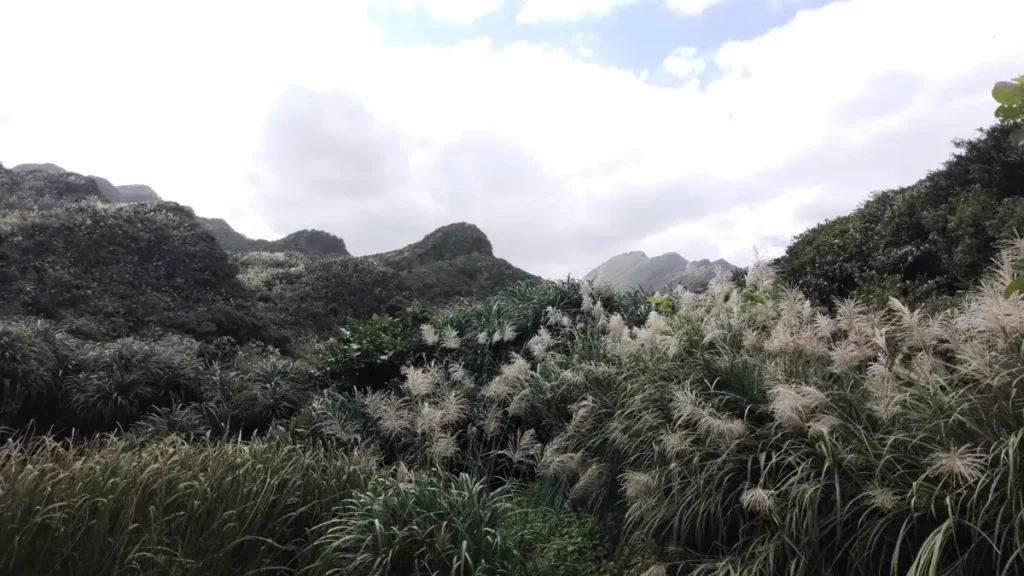
While not poisonous, saw grass can pose a physical hazard to hikers in Taiwan’s wetlands and marshy areas.
- Appearance: Tall grass with sharp, serrated edges along the length of the blade.
- Effects: Its edges can easily cut skin, like mean paper cuts. It’s fine if you slide along it towards the top, like if you walk though it normally. But if you hold on wrong and brush against it towards the bottom, you will bleed.
- Precautions: Be cautious when pushing through dense grassy areas, consider gloves.
Giant Hogweed (Heracleum mantegazzianum)
Giant Hogweed, an invasive species in some parts of Taiwan, is a plant that’s both fascinating and fearsome.
- Appearance: It towers up to five meters tall with large, umbrella-shaped flower heads and a stout, ridged stem.
- Effects: Its sap contains toxins that, when combined with sunlight, cause phytophotodermatitis – leading to severe burns and long-lasting scars.
- Precautions: Avoid touching or brushing against this plant. If you come into contact with its sap, immediately wash the area with soap and water and keep it out of sunlight.
Poison Ivy (Toxicodendron orientale)
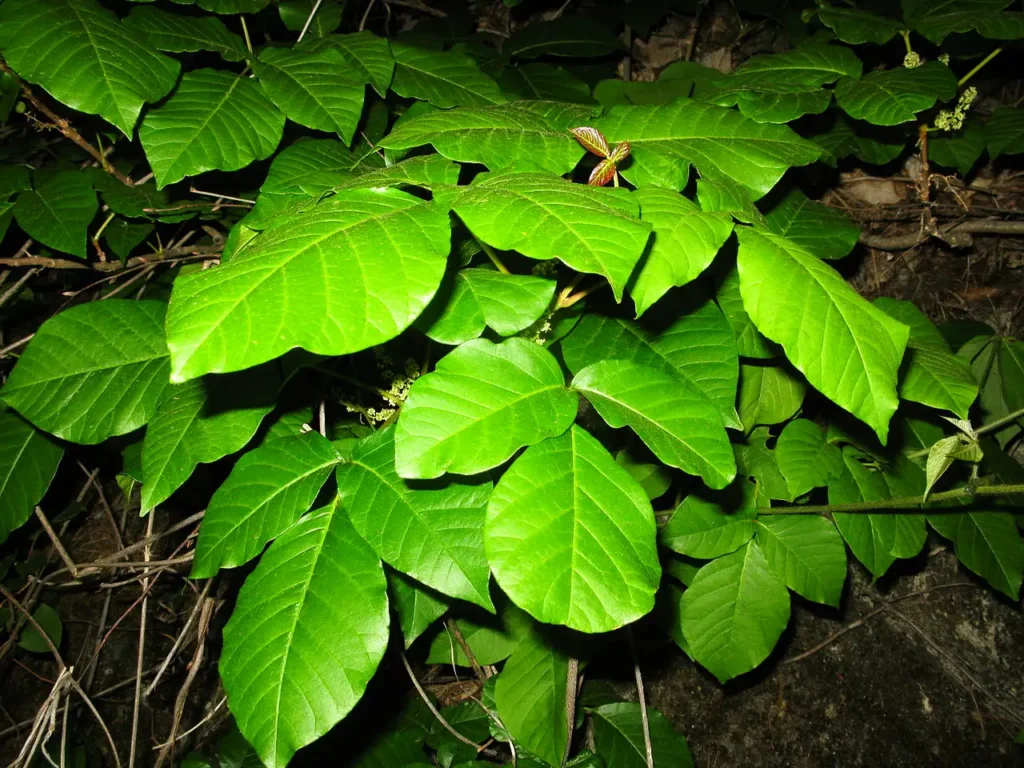
Poison Ivy, though more commonly associated with North America, is also present in parts of Taiwan, often catching hikers off guard.
- Appearance: Recognizable by its clusters of three almond-shaped leaves, which can change color with the seasons.
- Effects: Its notorious itch is due to urushiol, an oil that causes an allergic skin reaction.
- Precautions: Familiarize yourself with its appearance. If you touch it, wash the area with soap and water as soon as possible. Calamine lotion or hydrocortisone cream can help soothe the rash.
Chinese Lacquer Tree (Toxicodendron vernicifluum)
This tree, while culturally significant in Taiwan, harbors a hidden danger in its sap.
- Appearance: It has a grayish bark and shiny, oval leaves. The tree is often cultivated and may not be encountered on wild trails.
- Effects: Similar to poison ivy, its sap contains urushiol, causing allergic reactions upon contact.
- Precautions: It’s advised to avoid direct contact with the tree. In case of exposure, follow the same steps as for poison ivy.
Taiwanese Nettle (Urtica thunbergiana)
The Taiwanese nettle, often found in the island’s dense forests, demands respect due to its painful sting. It’s a plant that defends itself through a chemical warfare of sorts.
- Appearance: Look for heart-shaped leaves with serrated edges and tiny, hair-like structures.
- Effects: Contact with the plant releases chemicals like histamine, causing intense itching, redness, and swelling.
- Precautions: Wear long clothing when hiking in areas where it grows. If stung, avoid scratching and wash the area with soap and water. Applying a cold compress can alleviate symptoms.
6. Health Risks for Hikers in Taiwan
Hiking in Taiwan, like any outdoor activity, comes with its share of health risks, particularly for those venturing into remote or wilderness areas. Understanding these risks and the necessary precautions can greatly enhance your safety and enjoyment on the trails.
Vector-Borne Diseases
- Mosquito-Borne Illnesses: Diseases like Dengue Fever and Japanese Encephalitis are present in Taiwan. These illnesses are transmitted by mosquito bites and can pose serious health risks.
- Precautions: Use insect repellent, wear long sleeves and pants, and consider sleeping under a mosquito net if camping. Vaccinations are available for some of these diseases and should be considered, especially for extended stays or for those traveling to high-risk areas.
- Tick-Borne Diseases: While less common, ticks in Taiwan can carry diseases like Lyme disease.
- Precautions: Wear protective clothing, use tick repellent, and thoroughly check for ticks after hiking.
Waterborne Diseases
Drinking contaminated water from streams or rivers can lead to illnesses such as Giardiasis.
- Precautions: Always treat natural water sources before drinking. Boiling, filtering, or using water purification tablets are effective methods. Be especially careful with any larger streams that might have settlements upstream – waste water treatment in Taiwan is … questionable.
Heat-Related Illnesses
Taiwan’s humid and often hot climate can lead to heat exhaustion or heat stroke, especially during strenuous hikes.
- Precautions: Stay hydrated, rest in shaded areas, and avoid hiking during the hottest parts of the day. Wear light, breathable clothing and a hat for sun protection.
Vaccinations and Medical Preparation
Before embarking on your hiking journey in Taiwan, it’s wise to consult with a healthcare provider. They can advise on necessary vaccinations based on your itinerary and the areas you plan to visit. Common recommendations might include Hepatitis A and B, Typhoid, and Japanese Encephalitis.
7. Legal Hiking and Camping Regulations in Taiwan
Taiwan offers a plethora of hiking and camping opportunities, but be mindful of the local regulations to ensure a responsible and enjoyable experience.
Camping Regulations
- Designated Camping Areas: Camping is generally allowed only in designated areas, especially in national parks and nature reserves. Wild camping can lead to hefty fines and environmental damage.
In national parks, there are in fact rangers looking for wild campers, especially if flashlights have been spotted during the night. (Don’t ask me how I know.) - Fire Regulations: Open fires are often prohibited, particularly during dry seasons. Use designated fire pits where available and always ensure that any fire is completely extinguished before leaving.
- Waste Management: Practice “Leave No Trace” principles. Carry out all trash and dispose of it properly. Use toilet facilities where available or bury human waste at least 200 meters away from water sources, trails, and campsites.
Permits and Reservations
- National Parks: For popular destinations like Taroko Gorge or Yushan National Park, permits and sometimes reservations for cabins or campsites are required. These can be obtained online through the respective national park websites.
- Mountain Entry Permits: For higher peaks and certain protected areas, you might need a mountain entry permit. These are often obtainable through online applications or at local police stations.
8. Cultural Considerations when Hiking in Taiwan
Hiking in Taiwan is not just a journey through nature, but also a cultural experience.
Local Hiking Customs
Taiwan’s hiking culture has its unique aspects that you might find different from other places. Here are some points to consider:
- Dress Code: Taiwanese hikers often opt for full-cover clothing, not just for sun protection but also as a cultural norm. It’s common to see hikers fully decked out in hiking gear, including hats, gloves, and even face masks. A popular choice of footwear is rain boots – a good idea when it gets really muddy.
- Group Hiking: Hiking in groups is very popular in Taiwan. You’ll frequently encounter enthusiastic hiking clubs and groups, especially on weekends.
- Littering: There’s a strong ethos against littering. Always carry your trash until you can dispose of it properly.
- Sacred Sites: Many trails pass by temples or sacred sites. It’s important to be respectful in these areas – keep noise levels down and follow any posted guidelines.
- Sharing the Trail: Taiwanese hikers are known for their friendliness. A smile or a nod goes a long way in sharing the trail harmoniously.
Language Barrier
Although English is widely taught in Taiwan, not everyone is speaks it. Knowing a few words to recognize on hiking trail signs and to exchange with other hikers comes in really handy in a pinch:
- Mountain (山, shān): Often seen on signs, indicating a mountain or hill.
- Valley (谷, gǔ): Also useful to be able to read on signs.
- Good Morning (早安, zǎo’ān): A common greeting you’ll use when encountering others on the trail.
- Thank You (謝謝, xièxiè): Always useful in any interaction.
- Keep going (加油, jiāyóu): Literally meaning “add oil,” this phrase is used to encourage someone to keep going or do well. You’ll often hear it on trails as a form of encouragement.
- Almost there (差不多了, Chàbùduōle / 快就到了, kuài jiù dàole): You’ll often hear these words of encouragement, saying that you’re almost at the top or finish. That’s not always true, though.
- Where is… (在哪裡, Zài nǎlǐ): Append to any of the following words to ask for where stuff is. No grammar needed.
- Restroom (廁所, cèsuǒ): Knowing this word is essential, especially in more remote areas where English signs might not be present.
- Food (食物, shíwù) / Water (水, shuǐ): Essential for asking about local amenities or when shopping for supplies.
- Mountain Top/Peak (山頂, shāndǐng): Particularly useful if you’re aiming for the summit of a mountain.
- Exit (出口, chūkǒu): Useful for finding your way out of a park or complex trail system.
- Parking Lot (停車場, tíngchē chǎng): For finding where to start or end your hike.
- Left (左, zuǒ) / Right (右, yòu): Basic direction terms can be helpful for navigation.
- Help (救命, jiùmìng): A crucial word in emergencies. It translates to “save life” and is used to call for help.
- Emergency (緊急, jǐnjí): Important to know in case you need to.
- Caution (小心, xiǎoxīn): Often seen on signs indicating a need for caution, such as slippery paths or steep areas.
Pronunciation Tips:
- Mandarin is a tonal language, meaning the tone in which a word is spoken can change its meaning. Don’t worry too much about perfect pronunciation, as locals often understand from context.
- Speak slowly and clearly, and don’t hesitate to use hand gestures to aid in communication.
- Smartphone translation apps can be a great aid in situations where language barriers are significant.
9. Availability of Hiking Resources in Taiwan
Water Availability
- On the Trail: In popular hiking areas, especially in national parks, you might find designated spots for drinking water. However, these are not ubiquitous. It’s always safer to carry sufficient water, especially in remote areas.
- Natural Sources: Streams and rivers are common in mountainous areas. While this water might look clean, it’s advisable to treat it before drinking to avoid waterborne diseases. Portable filters or purification tablets are useful for this purpose.
I’ve been okay drinking from tiny mountain streams upstream of any human civilization; water from anything larger is better filtered. - Refill Stations: Some trailheads and visitor centers have water refill stations. Check the map and plan your refill points accordingly. There are convenience stores in unexpectedly remote places; and in small towns, you can ask for water at police stations.
Food Resources
- Along the Trails: For popular trails, especially in national parks, you may find small shops or vendors selling snacks and basic supplies. These are more common near trailheads (and among massive flocks of tourists) and less so as you venture deeper into the wilderness.
In any case, carry some cash so you can enjoy the unexpected mountain coffee some vendor in the middle of nowhere offered! - Local Markets: Before heading out on your hike, consider stopping by local markets or stores. They are great places to stock up on trail snacks, fresh fruit, and other portable food items.
- Preparation: For longer hikes, it’s wise to carry enough food to last the entire journey, considering both meals and high-energy snacks.
Hiking Gear
- Rental Options: In tourist-friendly areas and near popular trails, you can find shops that rent out hiking gear like walking sticks, boots, and even backpacks. This can be a convenient option if you’re traveling light or have forgotten to pack something.
- Purchase: Outdoor gear stores are found in most cities and towns in Taiwan. They range from local brands to international ones, offering a wide array of gear suited for the diverse terrain of Taiwan.
- Local Advice: Shop staff are often seasoned hikers themselves and can provide valuable advice on the best gear for your specific hiking plans.
10. Emergency Services Available to Hikers in Taiwan
Taiwan’s hiking trails offer an escape into nature, but it’s crucial to be aware of the emergency services available, especially in remote areas. Understanding how to access these services can be a lifesaver in case of an unexpected situation.
Emergency Phone Numbers
- General Emergency Number: Dial 112 or 110 for immediate assistance. These numbers connect you to police and emergency services.
- Mountain Rescue: For emergencies specifically in mountainous or remote areas, Taiwan has specialized mountain rescue teams. The contact information for these can usually be found at trailheads or on national park websites.
Accessibility and Response Time
- Urban Proximity: Many of Taiwan’s hiking trails are relatively close to urban areas, which can lead to quicker response times. However, this varies based on location.
- Remote Areas: In more secluded areas, it may take longer for emergency services to reach you. In such cases, being prepared with a basic knowledge of first aid and survival skills is beneficial.
Connectivity for Emergency Calls
- Cellular Reception: While Taiwan boasts good cellular coverage, some remote hiking areas may have limited or no signal. It’s wise to inform someone of your hiking plan and expected return time before heading out.
- Special Locations for Reception: Some trails have designated spots where cellular reception is known to be stronger. These are often marked on trail maps or indicated by signage along the trail – take a mental note as you pass them.
Preparing for Emergencies
- Communication Device: Consider carrying a satellite phone or a personal locator beacon (PLB) if you plan to venture into very remote areas.
- First Aid Kit: Always carry a well-stocked first aid kit and know the basics of first aid care.
- Local Knowledge: Check with local authorities or park offices about the specifics of emergency response on the trails you plan to hike.
11. Insurance and Healthcare Access in Taiwan
For hikers exploring the diverse terrain of Taiwan, understanding the local healthcare system and considering appropriate insurance is vital. It ensures peace of mind, knowing that you are covered in case of unexpected medical needs or emergencies.
Healthcare in Taiwan
- Quality of Care: Taiwan is known for its high-quality healthcare system, which is accessible and efficient. Hospitals in major cities are well-equipped, and many healthcare professionals speak English. This is especially true for emergency care (with longer-term rehab issues, I haven’t found the doctors too helpful).
Health Insurance for Hikers
- Travel Insurance: If you’re visiting Taiwan, it’s advisable to have travel insurance that covers medical emergencies and evacuation. This is especially important for hiking, as some trails can be quite remote and evacuations, if needed, can be expensive.
- Local Insurance: For residents or long-term visitors, Taiwan’s National Health Insurance (NHI) provides comprehensive coverage. You pay about 600 NTD to be admitted to emergency care, and pay for medications you’re prescribed; the rest is free.
- Typical costs of medical services: For minor injuries or ailments, the cost of medical care in Taiwan is relatively affordable, even without insurance. However, costs can escalate quickly in case of serious injuries or complex emergencies (for example, it costs about 10000 NTD to get an MRI).
Conclusion
Equipped with the knowledge you need to stay safe out here, I hope you have some amazing hikes in Taiwan! It is one of my favourite places to enjoy the mountains, with varied terrains, everything from tropical jungle to high-altitude mountains with amazing views.


